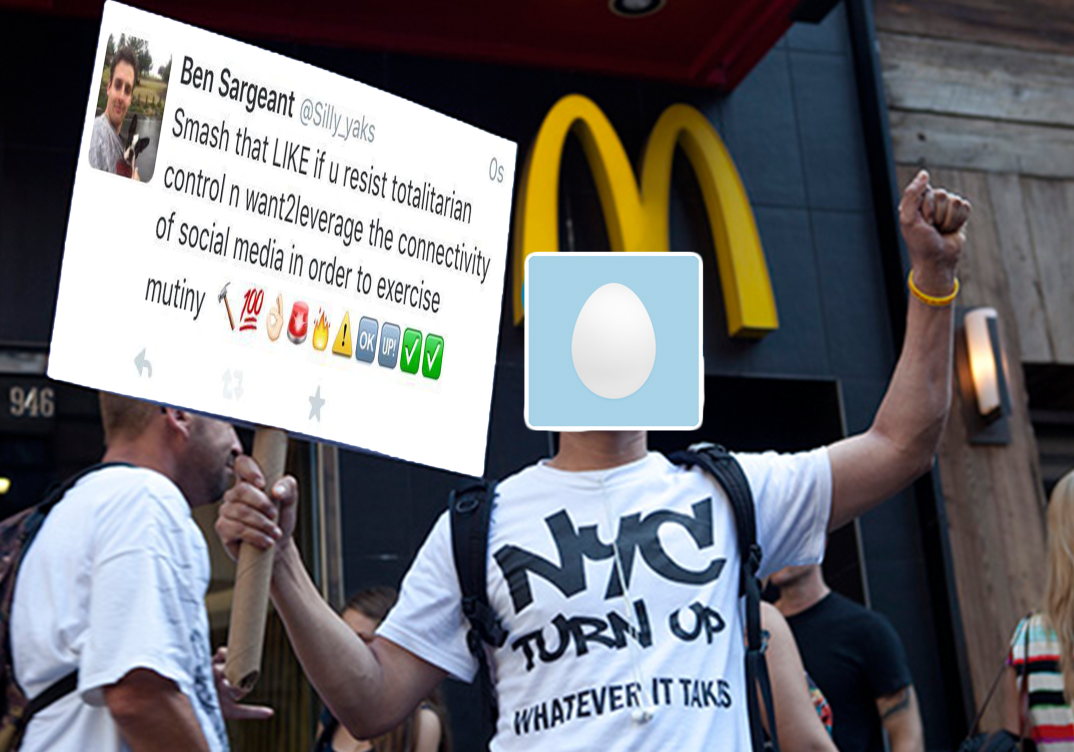The power of connectivity is an overlooked privilege that is widely accessible irrespective of region, state or political scape. Discourse is not at all bound to proximity, therefore allowing transglobal communication bound instead to immediacy. The internet functions under a dialogic medium which is a fundamental aspect of conversation. It is the only medium where its affordances can foster this type of communication. Legacy media can only operate monologically, through disseminating information through a single channel to a passive audience. In oppressed countries, the media is often heavily controlled and filtered by the state, however in an online environment this same control cannot be exercised. Individuals living under certain totalitarian control are suddenly gifted the ability to subvert the government exempt of ramifications. Due to the power of connectivity, conversation, ideas of change and revolutionary discourse can perpetuate organically. When totalitarian powers try exercise control, suddenly the ‘proletariat’ have power to resist this force; connectivity functioning within a network society paradigm can provide a platform for manifesting protest.
This is exemplified through the Euromaidan protests where the strength of the resisting force grew due to the aggregation and curation of fragmented and unlinked discourse. The driving force of this movement started through organising the information under a single entity. “Before these leading social media accounts emerged and accumulated their audience” (Bohdanova 2013) the users largely relied on the use of disparate Ukrainian and Russian hashtags to disseminate and share information. This by proxy is inefficient because there is an abundance of content, uncategorized and inaccessible. Progression and movement for the revolution of Ukraine’s #Euromaidan, was truly a product of aggregation and curation of mass content and information. The official Facebook pages (and their respective culture specific iterations that harbour discourse accessible by language) and twitter users, aided in this process, by creating environments for individuals to engage in the discourse and challenge the force of a totalitarian government, free of fear of the implications resulting from physical spaced protests – you cannot be reprimanded or incapacitated online.
These pages developed specific infrastructure to support individuals effected by the brutalities inherent in resisting totalitarian force. Although operating online, in an intangible, virtual environment, They do not at all neglect the fact that they are still physically bound because this issue is localised within the ukraine. Casualties to the instances of state brutality found solace in the support infrastructure generated through more niche specific facebook pages operating as subsidiaries to the ‘EuroMaidan Facebook Page’. They include, ‘Euromaidan SOS’, which offers pro-bono legal and medical aid offered by industry practitioners. Furthermore there was a heavy reliance on crowdfunding to solidify the movement and generate solid grounding for the protest to develop. This was leveraged through the Facebook group ‘Don’t Ditch Maidan’ which “solicits creative ideas for actions, slogans and posters from Facebook users and shares them with a wider internet audience.” (Bohdanova 2013). It has been also noted how well organised the protest is, despite organically growing from concerned citizens stressing their lament for the government.
It truely is a testament to the power of connectivity. The rapid growth of this protest is an aggregation of dialogic communication; Where the spectrum lies between a single tweet to Maiden Square being completely occupied by thousands of people completely sheltered, fed and fuelled to sustain their drive to subvert their governments ambition to further separate Ukraine from the European Union.

Haha your meme is amazing, and amazing insight into the use of social media from people wanting discourse on the Ukraine Russia conflict and how they centralised discussion rather than relying on the “disparate” categorisation. Really great post.
Not gonna lie, your titles for all your blog posts are on point, and 90% of the reason I’m choosing to comment on them. Short, related and witty – what more could you want?
Your #EuroMaidan case study was really in depth, and creates a really clear image on how the movement utilised social media to organise themselves.
Is your meme however, highlighting the passive side of online activism? While smashing a like button for a cause can be effective at getting the word out, does it lose value when not paired with more tangible results? EuroMaiden capitalised on the global nature of their protest platform, by issuing a request for crowd funding, but without creating a clear call to action – for crowdfunding globally, or protests locally – would the movement have fallen short of it’s potential, resulting in a large userbase aware of the situation, and no real change occurring?